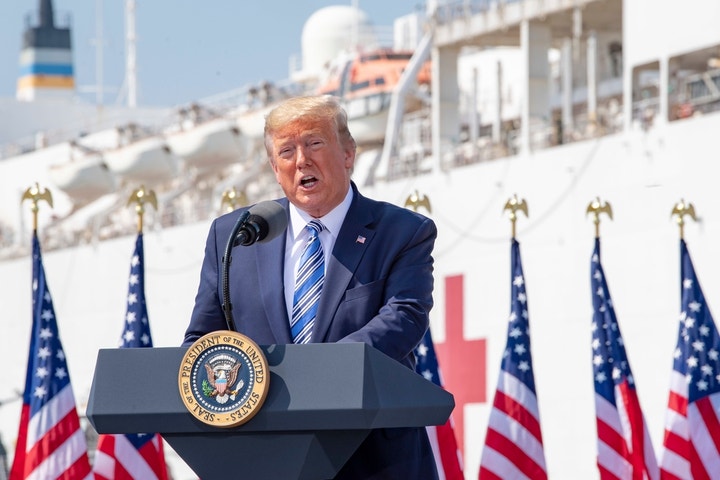President Donald Trump has announced plans for substantial tariff increases, proposing a blanket rate of between 15% and 20% on imports from most countries. This proposal follows a surprising budget surplus reported by the U.S. Treasury Department for June, which showed a surplus of over $27 billion, a significant turnaround from a deficit of $316 billion in May. The increase in tariffs is credited with contributing to this surplus, as customs duties reached approximately $27 billion for the month, marking a remarkable 301% rise compared to figures from June 2024.
In a telephone conversation with NBC News anchor Kristen Welker, Trump expressed his satisfaction with the surplus, stating, “The tariffs have been very well received.” He indicated that if a 10% tariff could generate around $300 billion annually, doubling the rate could potentially double the revenue.
Experts caution that this aggressive tariff strategy could have unintended consequences. Ed Yardeni, president of Yardeni Research, warned that tariffs act as a tax on U.S. importers, which could squeeze corporate profit margins and overall business profits. While there may be some offset from rebounding productivity growth, the overall impact on businesses remains a serious concern. Yardeni advised Trump to “beware of hubris” and advised against further escalation of tariffs, emphasizing the importance of respecting the independence of the Federal Reserve.
Federal Reserve Concerns and Market Reactions
The Federal Reserve, led by Chair Jerome Powell, has expressed growing concern about the inflationary pressures that tariffs might impose on the economy, complicating Trump’s calls for interest rate cuts aimed at easing the national debt burden. In June, net interest payments reached $84 billion. The minutes from the Fed’s June meeting highlighted a pervasive sense of uncertainty, with the terms “uncertain” and “uncertainty” appearing 28 times. Powell himself reiterated these sentiments, using the words a total of 19 times during discussions.
In response to the news surrounding tariffs and the economy, financial markets experienced volatility. On Friday, major indices, including the SPDR S&P 500 ETF Trust and Invesco QQQ Trust ETF, saw declines after reaching recent highs. The SPY ETF dropped 0.35% to $623.62, while the QQQ ETF fell 0.23% to $554.20. On Monday, futures for the S&P 500, Dow Jones, and Nasdaq 100 indices were trading lower, reflecting growing apprehension among investors.
The ramifications of Trump’s tariff strategy extend beyond immediate financial markets. As the administration navigates these complex economic dynamics, the potential for increased tensions with international trading partners also looms large. The delicate balance between stimulating revenue through tariffs and maintaining healthy trade relationships is a pivotal challenge for the U.S. economy in the coming months.
